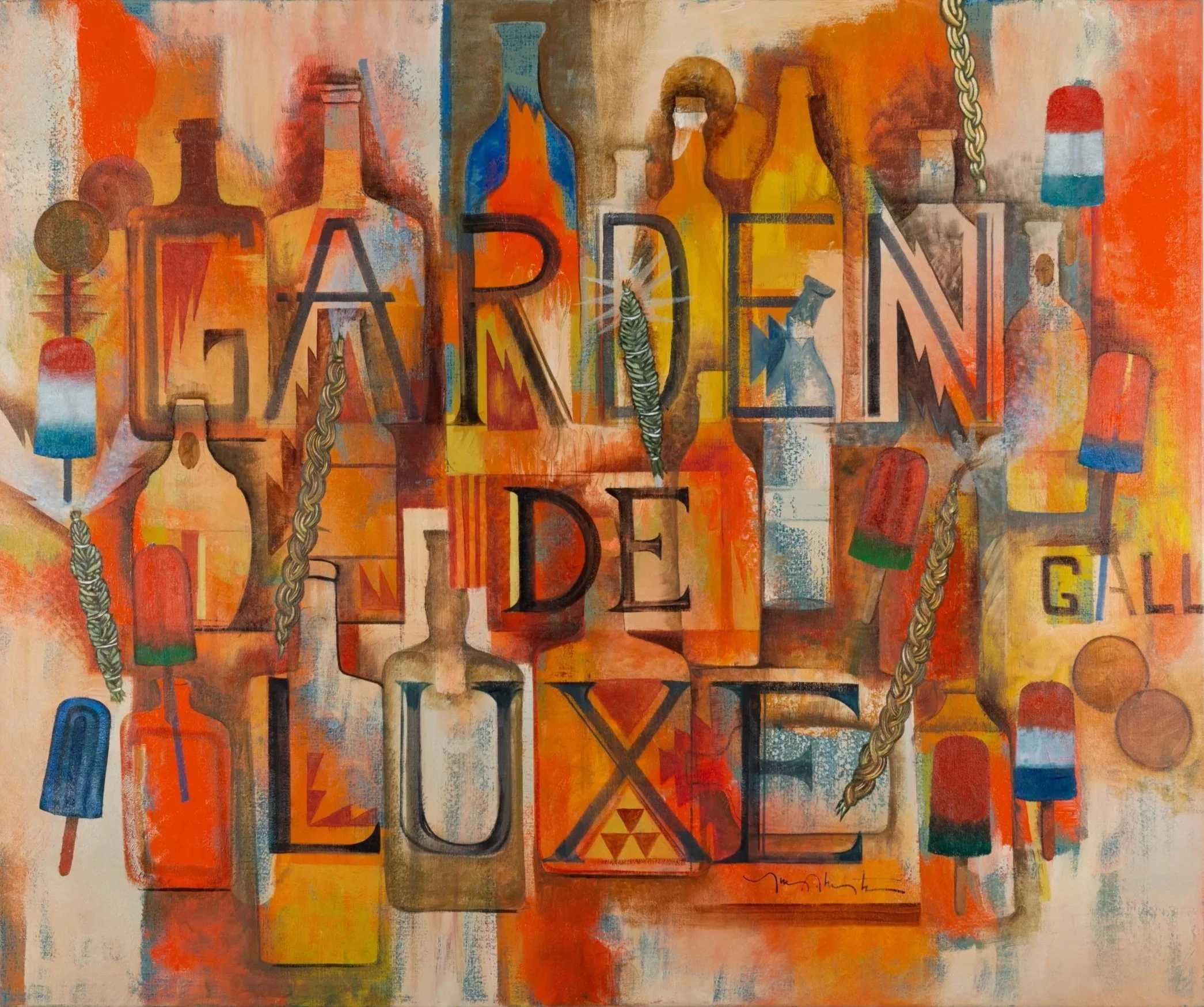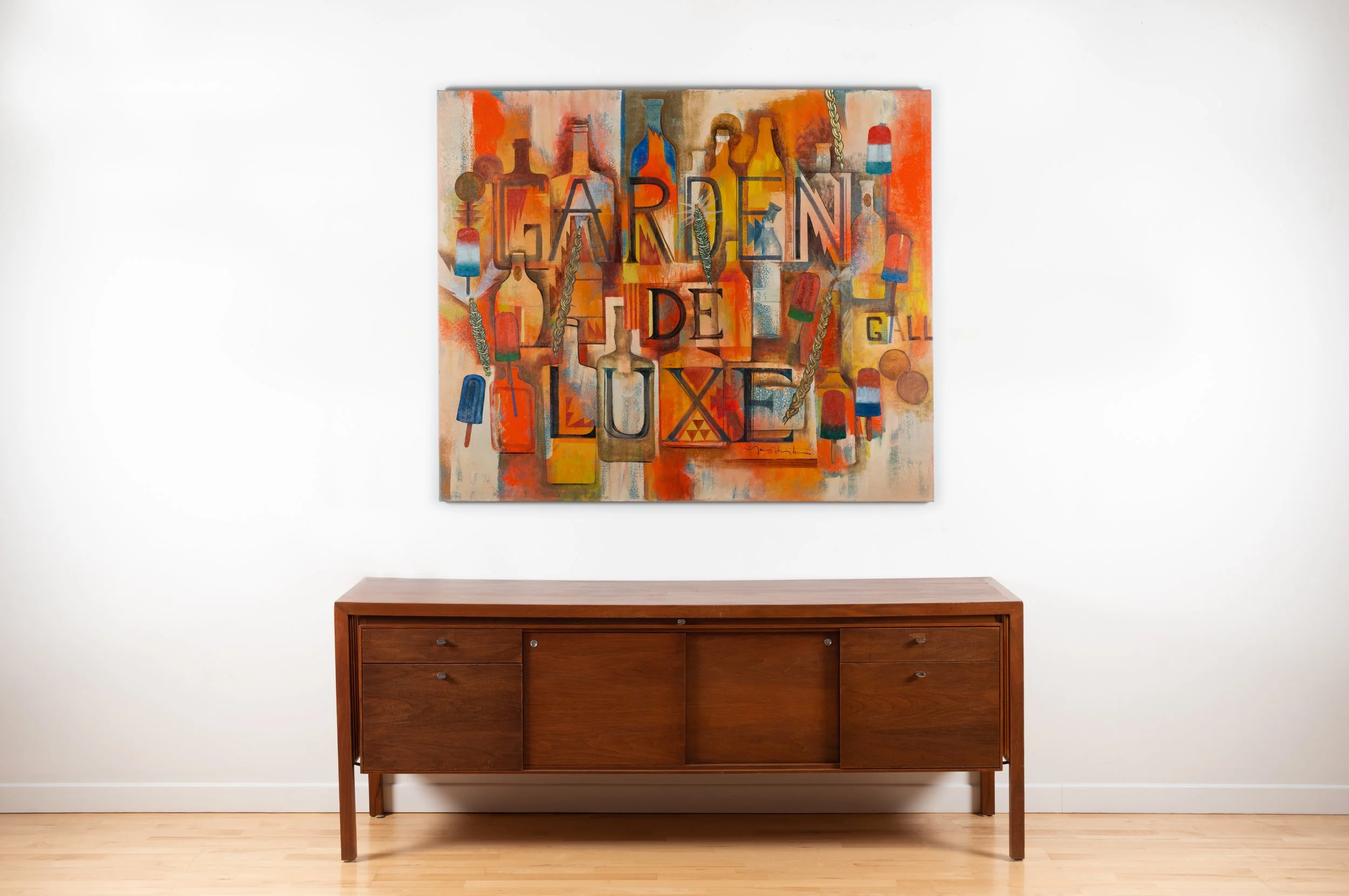TONY ABEYTA
Top Shelf / Garden de luxe
Date: 2025
Dimensions: 50” x 60”
Medium: Oil on canvas
Condition: Overall very good
Provenance:
– Artist
– Trotta-Bono Contemporary, Los Angeles, CA
SOLD
I grew up in Gallup, New Mexico in the 1970s, during an era when alcoholism prevailed—with a profound and lasting impact on the Navajo/Diné communities. Gallup is a small city along Route 66, ringed by Native American reservations and split by the railroad. It served as a commercial hub and weekend gathering place—but also as the epicenter of a devastating epidemic of alcoholism within the Navajo/Diné community.
Locally, “GD” referred to Garden de luxe, a cheap Tokay wine produced by Joe G. Maloof & Gallup Sales Co., notoriously bottled from the dredges of low-end California wineries and shipped in on tanker trains. Along with its counterpart, Roma, it was potent, inexpensive, and consumed largely by street drinkers, those unwelcome in bars. The drink no longer exists—except as bad memories to those who witnessed its wrath.
In winter, those who froze to death after drinking were grimly nicknamed “Popsicles” and recorded by police as “203s.” The alleys, riverbeds, and foothills were littered with empty bottles. Even now, as the sun sets over Gallup, the hills still glitter with broken glass—silent monuments to decades of loss.
My childhood passed amid movie theaters, baseball games, sunburned foothills, and bike rides past makeshift camps. Alcohol seemed harmless—until it claimed friends, neighbors, and family.
This work is both remembrance and elegy. It reflects on Gallup’s grim moniker as “the drunk capital, USA,” yet also acknowledges resilience. When I visit the local flea market, the scent of burning sage still cuts through the air, offering ceremony, healing, and hope.
The painting is a prayer for those who never found recovery.
– Tony Abeyta




